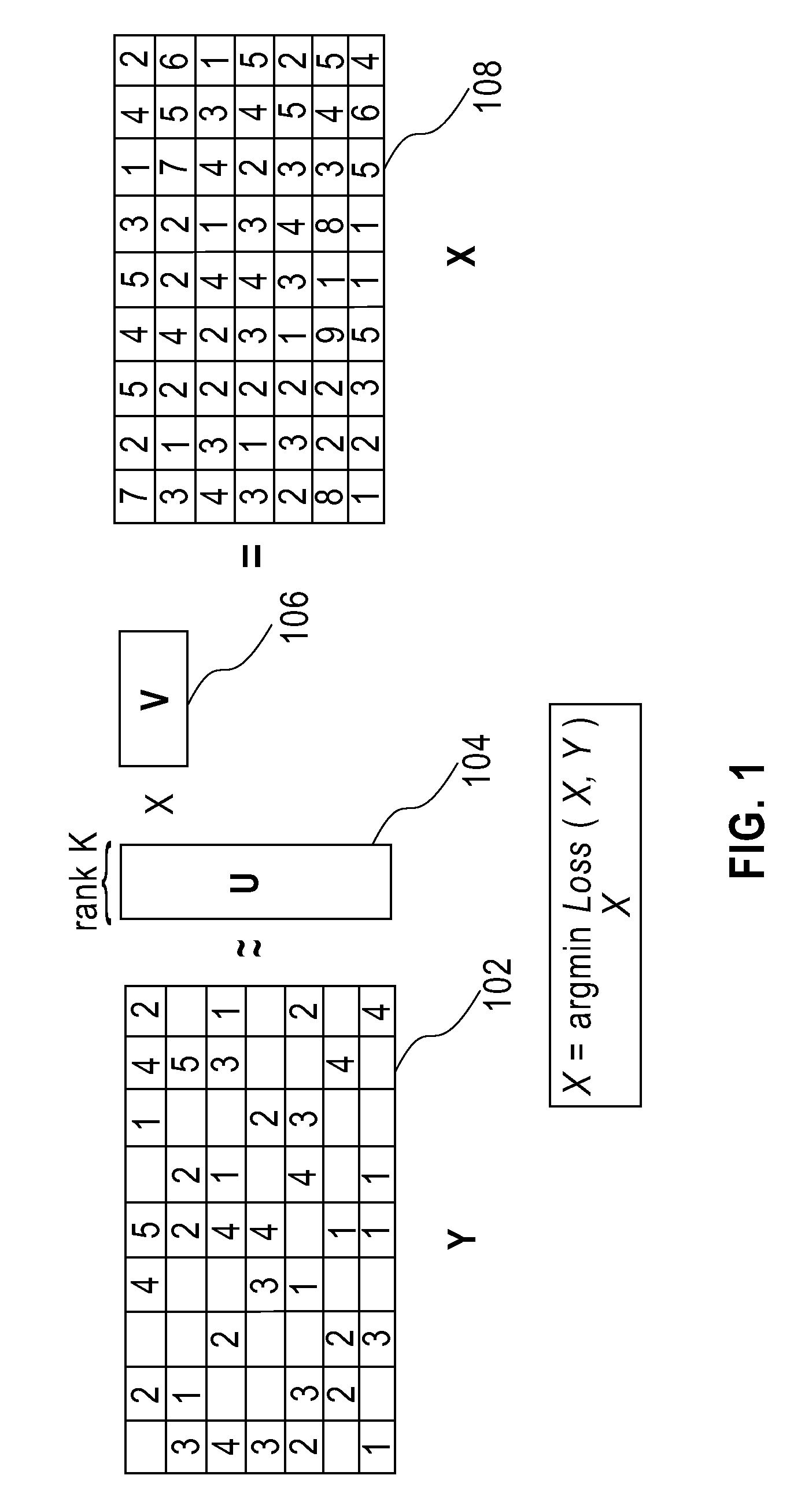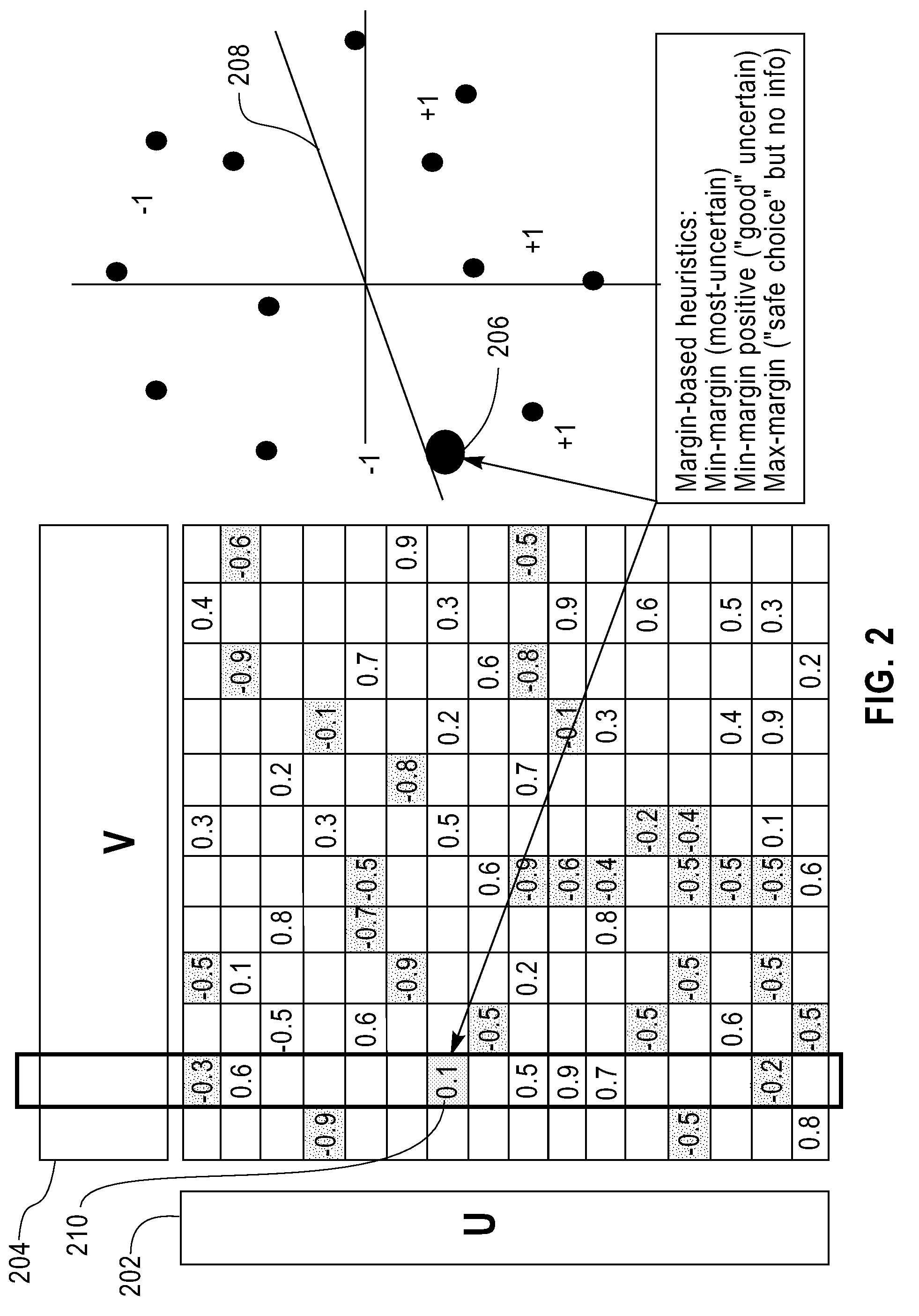Active sampling collaborative prediction method for end-to-end performance prediction
a prediction method and collaborative technology, applied in the field of machine learning approaches and end-to-end performance estimation, can solve the problems of inability to keep up-to-date in highly dynamic environments, inability to estimate end-to-end performance by exhaustive pairwise measurement, and potential significant practical limitations
- Summary
- Abstract
- Description
- Claims
- Application Information
AI Technical Summary
Problems solved by technology
Method used
Image
Examples
Embodiment Construction
[0011]Disclosed is a broadly applicable machine-learning approach to end-to-end performance estimation. The estimation, in one embodiment, may be formulated as a collaborative prediction (CP), or sparse matrix approximation problem. Namely, given a large and very sparsely sampled matrix, for example, only a few percent of entries may be observed in some applications, the collaborative prediction problem predicts the unobserved entries from the observed samples, assuming the entries have dependencies across rows and across columns. In one embodiment, the state-of-art matrix factorization method may be combined with active sampling
[0012]Typical applications of CP may include online recommendation systems that attempt to predict user preferences towards different products, for example, movies, books, etc., based on previously obtained product ratings from other users. In distributed systems management, the method of the present disclosure in one embodiment may be used to predict the en...
PUM
 Login to View More
Login to View More Abstract
Description
Claims
Application Information
 Login to View More
Login to View More - R&D
- Intellectual Property
- Life Sciences
- Materials
- Tech Scout
- Unparalleled Data Quality
- Higher Quality Content
- 60% Fewer Hallucinations
Browse by: Latest US Patents, China's latest patents, Technical Efficacy Thesaurus, Application Domain, Technology Topic, Popular Technical Reports.
© 2025 PatSnap. All rights reserved.Legal|Privacy policy|Modern Slavery Act Transparency Statement|Sitemap|About US| Contact US: help@patsnap.com



